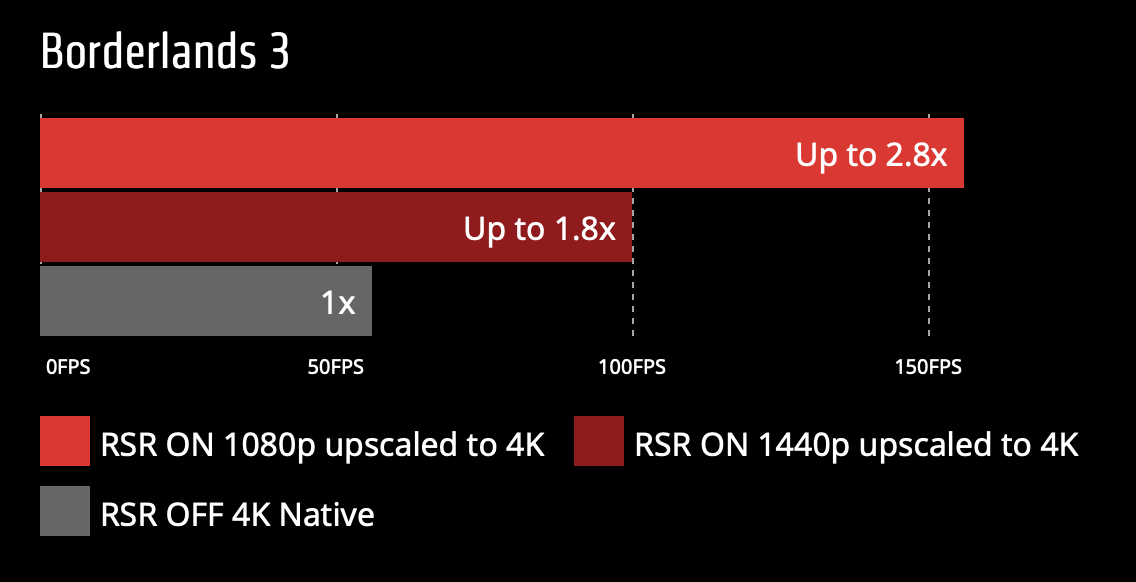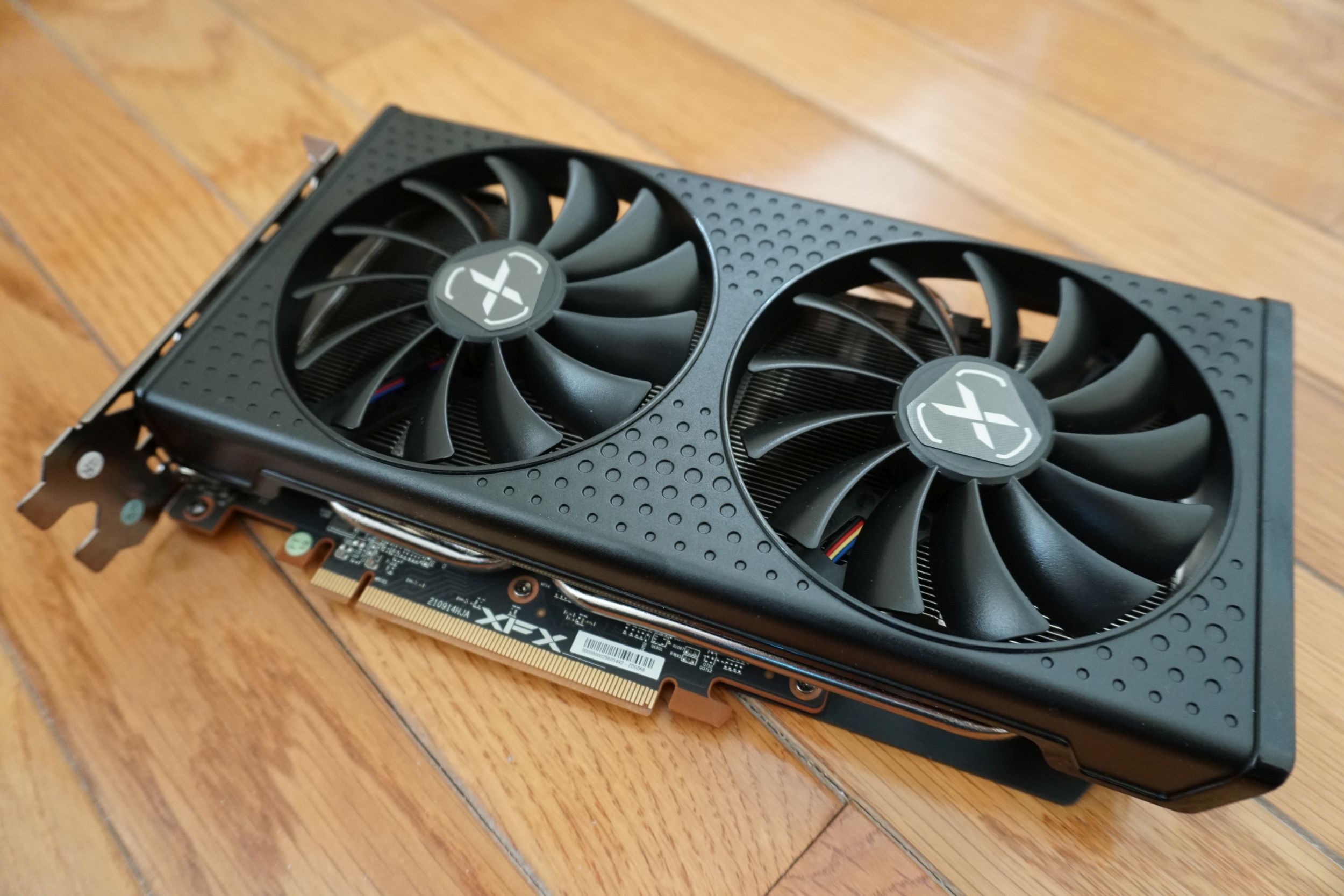AMD RSR vs. FSR: What's the difference, and which should you use?

 Image: Brad Chacos/IDG
Image: Brad Chacos/IDGAMD recently released its Radeon Super Resolution (RSR) feature, which promises to speed up the performance of your games. But wait! AMD already offered a similar technology dubbed “FidelityFX Super Resolution,” or FSR, and it’s been adopted at a blistering rate since its introduction last summer. They’re very similar, but not quite the same.
A bit confused? You’re not alone. Don’t let the names get lost in translation, however. We’ll explain exactly what each one does, along with when you should use them. And trust us—having both of these available means better PC gaming in general.
Upsampling basics
Radeon RX 6600 Swft 210
 Read our reviewPrice When Reviewed:$329.99Best Prices Today:$199.99 at Amazon | $229.99 at Newegg
Read our reviewPrice When Reviewed:$329.99Best Prices Today:$199.99 at Amazon | $229.99 at Newegg
AMD, Intel, and Nvidia all have their own versions of upsampling technology. The easiest way to think of these technologies is that they’re using software to enhance the hardware performance of your GPU without needing to upgrade. The holy grail of PC gaming includes both high frame rates and gorgeous graphics. These technologies allow us to achieve both simultaneously.
You may have heard of Nvidia’s DLSS (Deep Learning Super Sampling) technology that accompanies its RTX GPUs. Basically, DLSS will turbo boost your frame rates in games, rendering the game internally at a resolution lower than your actual monitor settings (which bumps up performance) while using artificial intelligence to keep graphics visually sharp with upscaling so you don’t notice major visual quality losses. Intel’s upcoming XeSS technology works in the same way.
This is very important in the newfound ray tracing era. Ray tracing typically delivers a heavy performance penalty in exchange for beautiful lighting affects and shadows. Resolution upsampling technologies mitigate these adverse performance effects while preserving as much eye candy as possible. But they can also be used in games that don’t have ray tracing to speed up frame rates and make everything feel smoother.
A key difference between Nvidia’s DLSS and AMD’s FSR is that Nvidia requires graphics cards that include dedicated RT and tensor core hardware, which only newer GeForce RTX GPUs will have. AMD’s FSR is open to a much broader spectrum of hardware since it does not have this requirement. It uses a simpler method dubbed “spatial upscaling,” which simply upscales a given frame and applies a sharpening pass. That means FSR can run on older Radeon graphics cards as well as GPUs from Nvidia and Intel, albeit with slightly more visual impact since it doesn’t use AI or temporal data from several frames to help clean up its output. The newer Radeon Super Resolution, however, limits the hardware pool once again to newer Radeon GPUs only.
AMD’s RSR and its various GPU boosting technologies can be found in the most recent release of its Adrenaline Software. Just update your Radeon drivers and you’re good to go.
How does RSR differ from FSR?
The first key difference is that RSR can be implemented on the driver level, universally in any game that supports full screen output. This means that it will work with countless more game titles than FSR (and DLSS). FSR depends on game developers to integrate the technology into each game title, therefore limiting its reach to select titles. If you’re playing certain supported games like Cyberpunk 2077 or Far Cry 6, you’ll be able to implement FSR on the game level. If you’re playing most other games, you’ll now have access to RSR on the driver level, without need for developer integration in specific games.Another key difference is hardware support. While RSR supports many more game titles, it will only work on Radeon RX 5000 or RX 6000 GPUs, such as the RX 5700 XT or RX 6800. FSR limits support to select games, but its hardware support is much broader, including Nvidia and older AMD GPUs. Using a Radeon VII graphics card? Yep, that works. How about an Nvidia GeForce RTX 2080 Ti? That’ll work with FSR, too.

AMD’s FSR supports a wide range of graphics cards, including GeForce GPUs from rival Nvidia.
AMD’s FSR supports a wide range of graphics cards, including GeForce GPUs from rival Nvidia.
AMD
AMD’s FSR supports a wide range of graphics cards, including GeForce GPUs from rival Nvidia.
AMD
AMD
FSR is still technically superior, but RSR is based on the same underlying algorithm. Having more focused game implementation and limited deployment in titles means that FSR can also focus on finer details that RSR simply can’t. For example, you can expect text and menu items to typically look better with FSR, since game developers apply FSR’s upsampling and sharpening before adding screen overlays like text and heads-up displays, while RSR may not be as accurate since it works on the entire final frame at the end of the pipeline. RSR’s upsampled text and HUD usually look very good, especially if you’re running it on a 1440p or 4K display, but there may be cases where you notice a visual difference.RSR requires you to be in exclusive full screen mode, though borderless full screen titles have a workaround that allows them to work. Changing your desktop resolution in Windows settings to one notch lower than your monitor’s native resolution will kick RSR into action.

This AMD-supplied chart shows the performance of Borderlands 3 running natively at 4K, BL3 running at 4K with RSR upscaling from 1440p, and BL3 running at 4K with RSR upscaling from 1080p
This AMD-supplied chart shows the performance of Borderlands 3 running natively at 4K, BL3 running at 4K with RSR upscaling from 1440p, and BL3 running at 4K with RSR upscaling from 1080p
AMD
This AMD-supplied chart shows the performance of Borderlands 3 running natively at 4K, BL3 running at 4K with RSR upscaling from 1440p, and BL3 running at 4K with RSR upscaling from 1080p
AMD
AMD
RSR performance can also depend on resolution choice, as this example given by AMD shows. The boost from upscaling to 4K from 1080p is tremendous compared to running with it off. 1440p provides an excellent sweet spot when going to 4K, too. Our RSR video embedded above
Which should you choose?
It’s simple: If you can choose, always select FSR if your game supports it. It will generally be superior in its application of the technology, with more elements on the screen being accurately upscaled and sharpened. You cannot use both at the same time, as that will cause conflicts, so choose only FSR when it’s available.
Radeon RX 6500 XT
 Read our reviewPrice When Reviewed:$199Best Prices Today:$189 at B&H | $200 at Newegg
Read our reviewPrice When Reviewed:$199Best Prices Today:$189 at B&H | $200 at Newegg
If your game doesn’t support FSR, don’t fret—RSR can still provide a noticeable performance boost to thousands more game titles, with little downgrade to visuals (especially in motion) if you stick to the Quality or Balanced visual options.
The only other limiting factor will be your hardware: If your game doesn’t support FSR, and you’re using an older Radeon GPU than an RX 5000-series graphics card (or an Nvidia or Intel GPU) you won’t be able to use RSR either. You’ll have to use other Radeon features that boost performance instead.
Author: Thiago Trevisan
Recent stories by Thiago Trevisan:
GeForce RTX 4070 vs. RTX 3080 vs. Radeon RX 6800 XT: Which to buy?MSI Z790 Edge WiFi DDR4: A motherboard with a silver liningMSI MEG X670E Ace: Top Gun performance for your Ryzen CPU






